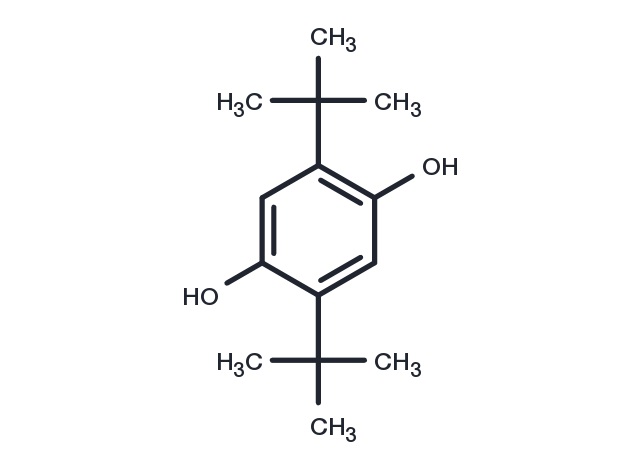Powder: -20°C for 3 years | In solvent: -80°C for 1 year


2,5-Di-tert-butylhydroquinone (BHQ) is an effective and selective endoplasmic reticulum Ca2+-ATPase inhibitor.

| Pack Size | Availability | Price/USD | Quantity |
|---|---|---|---|
| 100 mg | In stock | $ 41.00 |


| Description | 2,5-Di-tert-butylhydroquinone (BHQ) is an effective and selective endoplasmic reticulum Ca2+-ATPase inhibitor. |
| Targets&IC50 | Ca2+-ATPase:66.7 μM |
| In vitro | BHQ shifted the voltage dependence of the steady-state inactivation curve to more negative potentials by 7 mV in the mid-potential of the curve, without affecting the activation curve as well as the time course of I(Ca(L)) inactivation.?Preincubation of the cells either with 10 microM cyclopiazonic acid, a SERCA inhibitor, or with 3 mM diethyldithiocarbamate, an inhibitor of intracellular superoxide dismutase (SOD), did not modify BHQ inhibition of I(Ca(L)).?On the contrary, this effect was no longer evident when SOD (250 u ml(-1)) was added to the perfusion medium.?Either in the presence or in the absence of cells, BHQ gave rise to superoxide anion formation, which was markedly inhibited by the addition of SOD.At micromolar concentrations, BHQ inhibits vascular I(Ca(L)) by giving rise to the formation of superoxide anion which in turn impairs the channel function. |
| Synonyms | BHQ |
| Molecular Weight | 222.32 |
| Formula | C14H22O2 |
| CAS No. | 88-58-4 |
Powder: -20°C for 3 years | In solvent: -80°C for 1 year
DMSO: 10mg/mL(44.98mM)
You can also refer to dose conversion for different animals. More
bottom
Please see Inhibitor Handling Instructions for more frequently ask questions. Topics include: how to prepare stock solutions, how to store products, and cautions on cell-based assays & animal experiments, etc.
2,5-Di-tert-butylhydroquinone 88-58-4 Immunology/Inflammation Membrane transporter/Ion channel Metabolism Neuroscience Calcium Channel Lipoxygenase COX Cyclooxygenase 2,5Ditertbutylhydroquinone Inhibitor LOX inhibit 2,5 Di tert butylhydroquinone BHQ inhibitor
